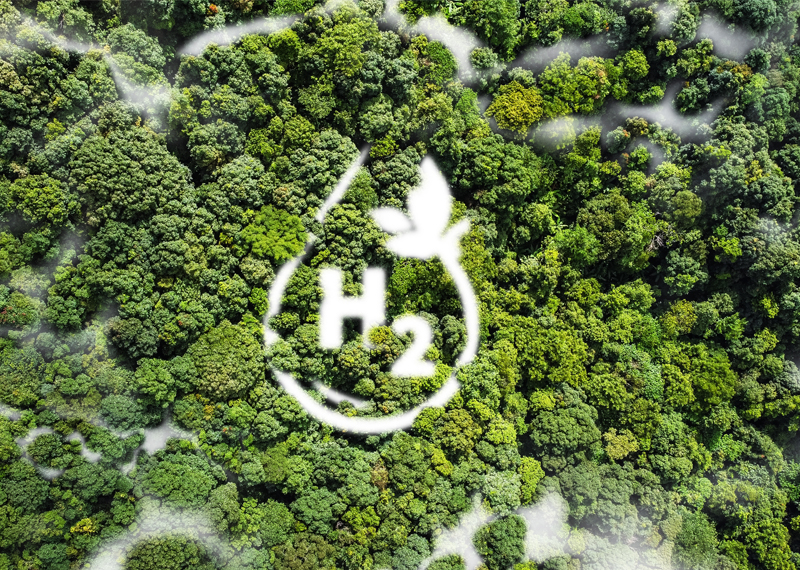White Hydrogen: A Gold Mine of Clean Energy Hidden in Plain Sight
09 January 2024The National Renewable Energy Laboratory confidently states on its website that “hydrogen does not exist freely in nature.” It adds that “hydrogen occurs naturally on Earth only in compound form with other elements in liquids, gases or solids.”
It is true that hydrogen is typically made from fossil fuels in a process that creates carbon emissions (so-called “blue” hydrogen), or by using renewable electricity and water (“green” hydrogen), which is very expensive.
However, discoveries in the small village of Bourakébougou in western Mali shatters the aforementioned claim and, in the process, has inspired a frantic worldwide search.
In 1987, a failed attempt to drill for water released a stream of odourless gas that one unlucky smoker discovered to be highly flammable. The well was quickly plugged and forgotten. But almost 20 years later, drillers on the hunt for fossil fuels confirmed the accidental discovery: hundreds of feet below the arid earth of west Africa lies an abundance of naturally occurring, or “white”, hydrogen.
The chemical mechanisms to explain how "white” hydrogen is produced are not well known. It is postulated that “white” hydrogen could be produced by various sources, including serpentinisation (a reaction between ultrabasic rocks and water), degassing from deep within the Earth's crust and mantle, weathering of rocks, contact between water and reducing agents in the Earth's mantle and by organic matter decomposition.
However, it is potentially an energy source that will be emission free and relatively cheap to produce. It will only be necessary to find and drill for it.
Geologists believe that untapped reservoirs of “white” hydrogen in the United States, Australia and parts of Europe have the potential to provide the world with clean energy on a large scale. The US Geological Survey has said that even if only a small fraction of hydrogen under the Earth’s surface could be recovered, there would probably be enough raw hydrogen to last for hundreds of years.
Efforts to locate reservoirs of “white” hydrogen are underway in many areas. During the COVID-19 pandemic, Luke Titus, founder of Gold Hydrogen, uncovered a historical hydrogen discovery in South Australia. Mr Titus was reviewing old documents from the Geological Survey of South Australia which included an analysis of data from local farmers who searched for oil using divining rods. One borehole drilled in 1921 on Kangaroo Island (South Australia) produced as much as 80% hydrogen content. Another, on the nearby Yorke peninsula (WA), was close to 70% hydrogen content. A century later, Gold Hydrogen began to explore the region and plans to begin drilling in October 2023.
There have now been a number of other underground “white” hydrogen deposits identified in reservoirs in locations such as France, Mali (again), the United States and over a dozen other countries. Unfortunately, they would all be challenging to access, and the potential of the reservoirs themselves would be challenging to assess in order to determine whether it would be worthwhile to make the effort. Oil companies including Total and Engie in France (where “white” hydrogen has been discovered in the Lorraine mining basin), and Repsol in Spain, have taken modest steps to search for “white” hydrogen.
On the basis of the gas data at 1,100 metres below ground (14% hydrogen), the Lorraine deposit could contain up to 46 million tonnes of “white” hydrogen, which is to say more than half of the world’s current annual production of “grey” hydrogen. This comes on top of France’s other potential “white” hydrogen reserves currently being explored in the Alps and the Pyrenees. Other untapped deposits in Europe may exist in Spain, Germany, Kosovo, Iceland, Finland, Sweden, Poland, Serbia, Norway, Ukraine and Russia.
Although the village of Bourakébougou might be the first to be powered by “white” hydrogen, the electricity grids of towns and cities across the world may soon be supplemented by an element that many believed did not exist in nature.
References
Prospectors hit the gas in the hunt for ‘white hydrogen’ - Jillian Ambrose, the Guardian
Unveiling the Mysteries of White Hydrogen: The Ultimate Guide - Jake Banks
